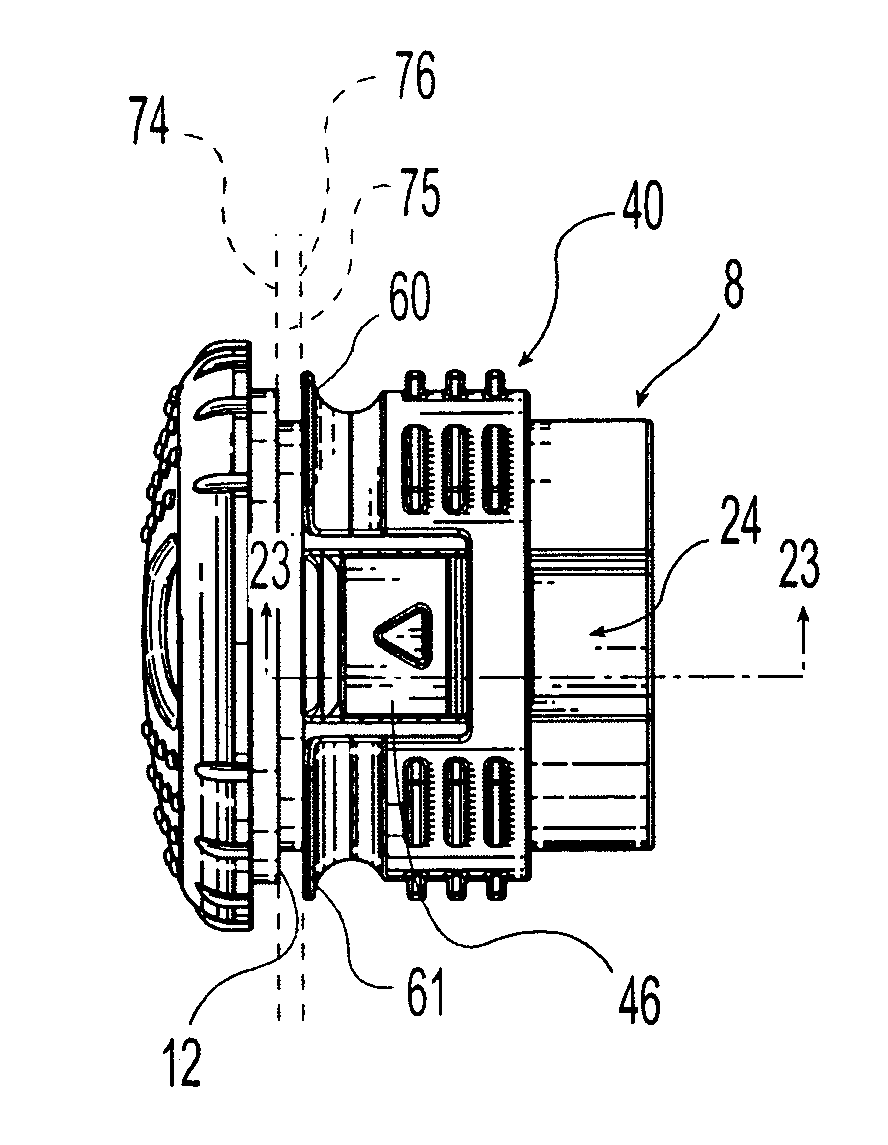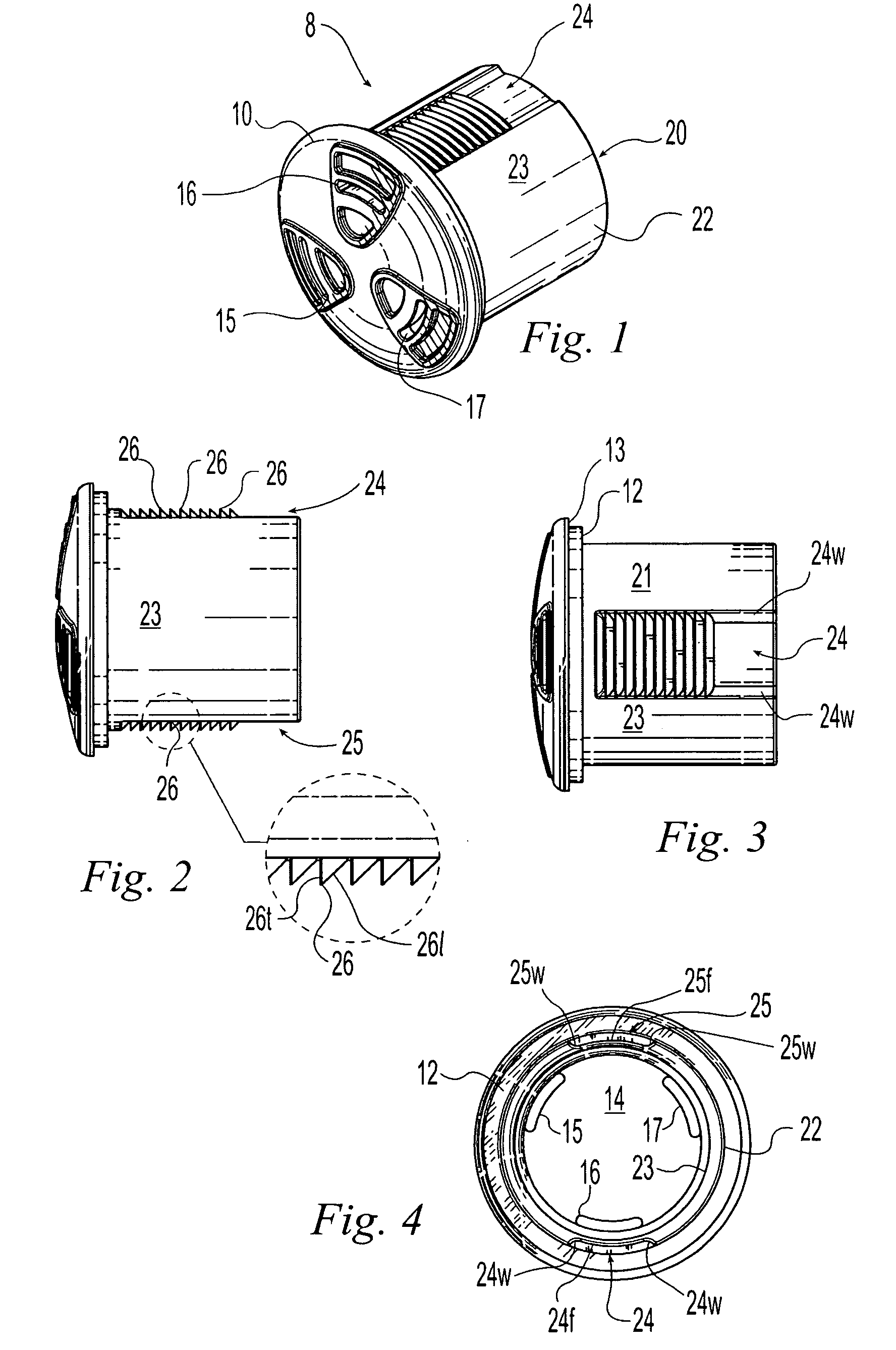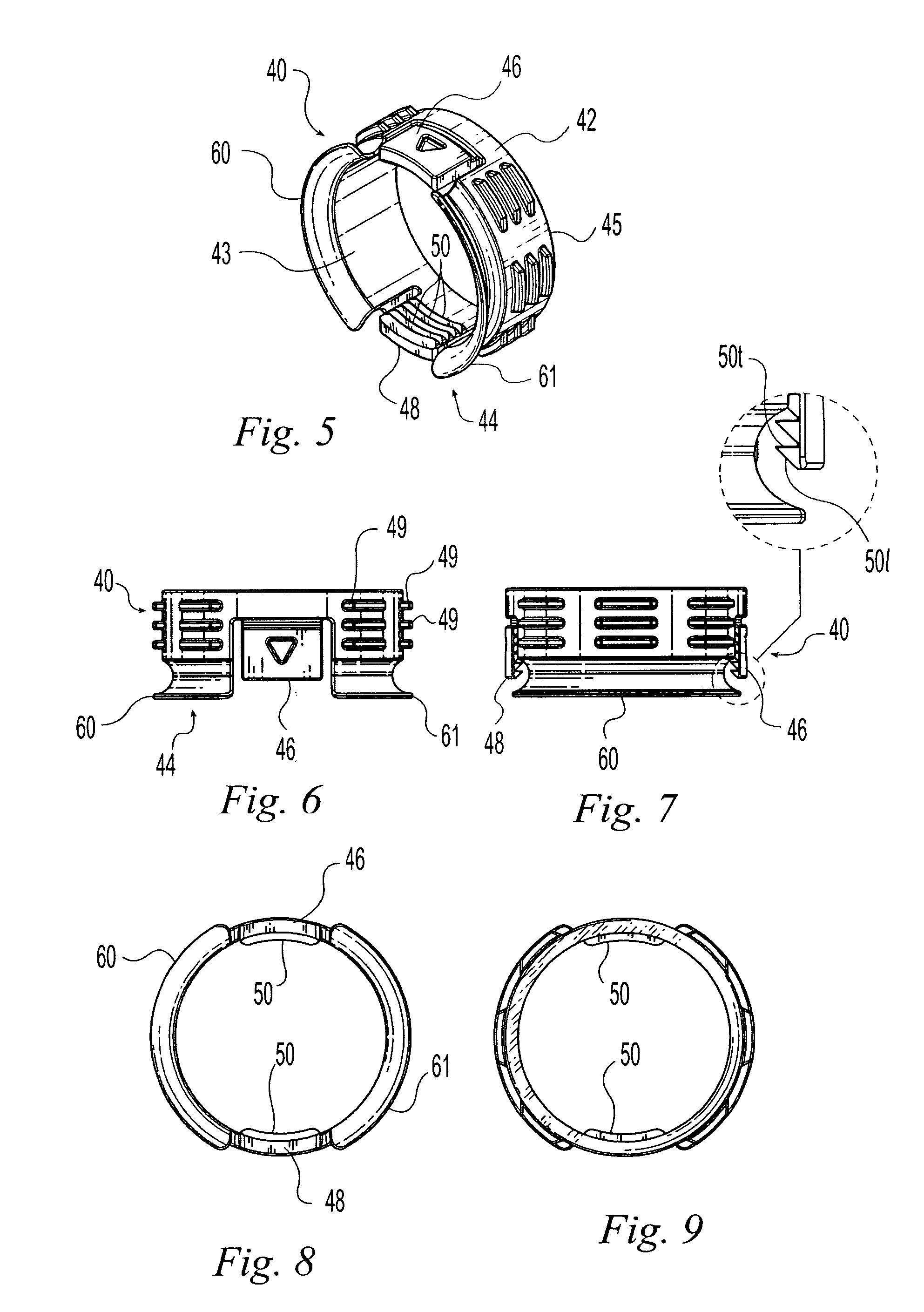Ratchet interlocking housing
a technology of interlocking housings and ratchets, which is applied in the direction of threaded fasteners, screws, bolts, etc., can solve the problems of repetitive motion injuries, unnecessarily consuming time, and taking numerous rotations of nuts, and achieve the effect of restricting the movement of sound
- Summary
- Abstract
- Description
- Claims
- Application Information
AI Technical Summary
Problems solved by technology
Method used
Image
Examples
Embodiment Construction
[0053]The preferred embodiment of the present invention has two main components: a shank member 8 and a nut member 40. In a preferred configuration, the nut member 40 is mounted to the shank member 8 after the shank member 8 is inserted through an aperture in a panel or another structure. The shank member 8 is installed through the panel aperture with the head 10 of the shank member 8 at the front of the panel and the nut member 40 at the rear. Of course, this could be reversed, for example, for switches mounted in the shank member 8.
[0054]The shank member is shown in FIGS. 1 through 4 having the head 10 and a sidewall 20. The sidewall 20 is preferably a circular cylindrical body having a radially outwardly facing surface 22 and an opposing radially inwardly facing surface 23. The outwardly facing surface 22 has longitudinal channels 24 and 25 formed on substantially opposite sides of the sidewall 20, and longitudinal smooth regions 21 and 23 between the channels 24 and 25 that sepa...
PUM
 Login to view more
Login to view more Abstract
Description
Claims
Application Information
 Login to view more
Login to view more - R&D Engineer
- R&D Manager
- IP Professional
- Industry Leading Data Capabilities
- Powerful AI technology
- Patent DNA Extraction
Browse by: Latest US Patents, China's latest patents, Technical Efficacy Thesaurus, Application Domain, Technology Topic.
© 2024 PatSnap. All rights reserved.Legal|Privacy policy|Modern Slavery Act Transparency Statement|Sitemap



